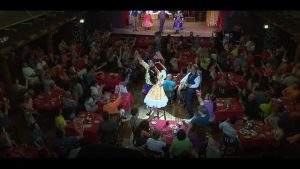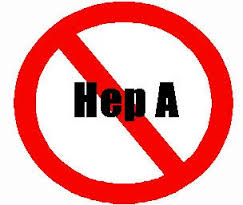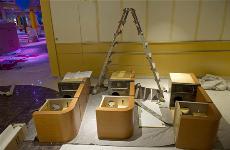There are so many Hepatitis A outbreaks going on in the U.S., we can’t begin to report them all, and many of the outbreaks have nothing to do with food.
 But when it involves at a Disney worker at the Hoop-Dee-Doo Musical Revue dinner show, it’s sorta tempting.
But when it involves at a Disney worker at the Hoop-Dee-Doo Musical Revue dinner show, it’s sorta tempting.
Hepatitis A vaccinations have now been offered to other workers at the resort
Disney has not closed the resort but insists it has been thoroughly sanitized
A Disney restaurant employee at the Fort Wilderness Resort has been diagnosed with the highly contagious infection Hepatitis A, sparking health fears at the Orlando resort.
The unnamed employee worked at the Hoop-Dee-Doo Musical Revue where diners can eat while watching a show.
 Disney has not closed the facility despite the scare but insists it has been thoroughly sanitized.
Disney has not closed the facility despite the scare but insists it has been thoroughly sanitized.
The worker has not yet returned to the restaurant and will not be allowed to until they have been cleared of the virus, the company said.
The employee has not worked since they were diagnosed with Hepatitis A and the park remains open
The case was reported to Florida’s Department of Health on January 24.
In a statement, Disney said that all of its employees had been offered vaccinations for the virus but it remains unclear if they all took them.
‘Nothing is more important to us than safety. Upon learning this news, we immediately began working with the Florida Department of Health in Orange County.
‘The impacted cast member has not worked since being diagnosed and will not return until officially cleared by the Department of Health.
‘We are not aware of anyone else becoming ill and continue to be engaged with the Department of Health to ensure we have all of the right processes in place to protect our cast members and guests,’ a spokesman told DailyMail.com.




 spokesman for the Orange County Health Department.
spokesman for the Orange County Health Department.
 decided to celebrate at Walt Disney World.
decided to celebrate at Walt Disney World.
 restaurants.
restaurants..jpg)
.jpg) During April–July 2009, the Utah Department of Health identified five cases of Salmonella Typhimurium infection with indistinguishable pulsed-field gel electrophoresis (PFGE) patterns, predominantly among children. In August,
During April–July 2009, the Utah Department of Health identified five cases of Salmonella Typhimurium infection with indistinguishable pulsed-field gel electrophoresis (PFGE) patterns, predominantly among children. In August, .jpg) But the basic facts in that Oregonian story — 50 sickened, including many young girls, by salmonella traced to frogs — were just too good not to spin into a Internet sensation based on a quote by William Keene.
But the basic facts in that Oregonian story — 50 sickened, including many young girls, by salmonella traced to frogs — were just too good not to spin into a Internet sensation based on a quote by William Keene. Doctors blamed the cases in 25 US states on youngsters kissing frogs after seeing the film. Most were under 10, with half being girls.
Doctors blamed the cases in 25 US states on youngsters kissing frogs after seeing the film. Most were under 10, with half being girls.